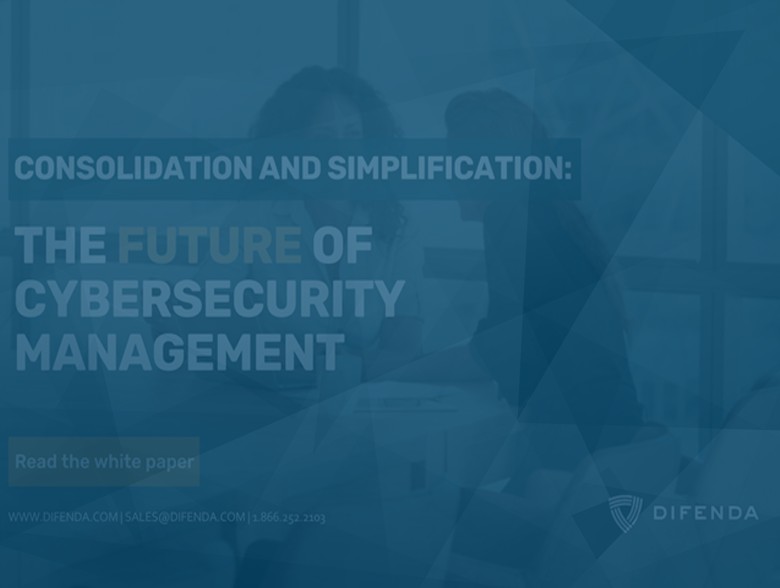By Derek Nugent, Vice President of Revenue at Difenda
Ransomware attacks have become a growing concern for businesses and individuals alike. Each year there are over 236.1 million ransomware attacks globally. The frequency of successful ransomware attacks has increased dramatically in recent years, and the damage caused by these attacks can be severe, including but not limited to emotional distress such as #RansomwareBreachFace, financial loss, data loss, business interruption, and reputational damage.
For example, in July 2021 a group of threat actors targeted the Florida-based software company, Kaseya, using a vulnerability in their VSA software. The attackers compromised over 1,000 businesses worldwide and demanded a ransom of $70 million in Bitcoin to release the encrypted data. The attack caused widespread disruption to businesses, with many unable to access their systems or data. Some businesses even had to shut down operations temporarily, and others lost valuable data.
Ransomware attacks like this one cost the world $20 billion in 2021. That number is expected to rise to $265 billion by 2031. Thousands of people are suffering from ransomware breach face every day.
What is Ransomware breach face?
“Ransomware Breach Face” (#RBF) is a term coined by Difenda that refers to the reaction of people who unintentionally cause a cyber breach within their company. This can happen when someone clicks on a phishing email or receives a ransom note.
The main causes of #RBF are human error and lack of visibility into the security environment.
Human error occurs when employees make mistakes such as downloading suspicious attachments, visiting malicious websites, or sharing sensitive information with unauthorized people, leading to a breach. In many cases, these actions are performed unknowingly, but they can have serious consequences.
The second major cause of successful ransomware attacks is a lack of visibility into the cybersecurity environment. Many organizations lack visibility into their network and endpoint activities, making it difficult to detect and respond to cyber threats in a timely manner. In many cases, cybercriminals will use encryption and other methods to hide their tracks, making it difficult for organizations to detect a ransomware attack until it is too late. This lack of visibility can lead to #RBF and other significant consequences for the business.
#RBF can cause major disruptions to business operations, as well as financial losses and damage to an organization’s reputation.
So, how did we get here?
Despite coming a long way from where we were five years ago, Ransomware Breach Face is at an all-time high and we are actually observing more serious ransomware breaches globally. Today, the average downtime caused by a ransomware attack is 12 days.
Some of the main reasons for increased successful ransomware attacks include:
- As organizations continue to rapidly adopt emerging cybersecurity technologies, they are inadvertently complicating their operations and creating blind spots in their data protection infrastructure.
- With a significant increase in remote work many organizations have struggled to secure their remote networks and endpoints, making them more vulnerable to ransomware attacks. With more employees working from home, attackers have more opportunities to exploit security gaps and breach an organization’s network.
- Attackers are constantly evolving their tactics and techniques to bypass traditional security measures and exploit vulnerabilities in new ways.
- The growth of the ransomware-as-a-service (RaaS) model has also made it easier for attackers with limited technical knowledge to launch ransomware attacks. RaaS providers offer turnkey solutions that include malware, hosting, and support services, making it easier for attackers to launch sophisticated attacks.
- Cybersecurity analysts are receiving hundreds of alerts a day and security teams can’t determine what to look at or when to look at it. The sheer volume of data generated by cybersecurity tools, coupled with the constant changes in the threat landscape and regulatory requirements is creating a perfect storm that many organizations can’t handle alone.
To combat these evolving threats and more, organizations need to take a proactive and holistic approach to cybersecurity that includes a combination of people, process, and technology. Ultimately, it’s important for organizations to prioritize cybersecurity as a strategic business initiative and invest in the resources necessary to protect their systems and data from the growing threat of ransomware attacks.
How To Survive a Ransomware Attack
In the unfortunate event that your organization becomes a victim of a ransomware attack, navigating the situation and minimizing the impact can be complicated. Working with a trusted and experienced cybersecurity partner can significantly streamline the response process and mitigate risk. Here’s some best practices and tips for surviving a ransomware attack:
- Disconnect affected systems: The first step is to disconnect any affected systems from the network to prevent the malware from spreading further.
- Assess the damage: Quickly assess the scope of the attack, identify which systems have been affected, and determine the extent of the damage. This information is used to develop a customized plan of action to address the attack.
- Secure systems: Secure your systems to prevent further damage and protect your data from being exfiltrated. This may include applying software patches, deploying new security controls, or taking other remediation steps as necessary.
- Data recovery: Contact the proper authorities and get expert advice to determine whether or not to pay the ransom. In many cases, it is possible to recover data without paying a ransom if proactive processes are in place already.
- Post-attack analysis: After the attack has been contained, conduct a thorough analysis of the attack to identify any vulnerabilities in your systems or processes that may have contributed to the attack. Based on the findings, get expert support on creating a roadmap for remediations that can help prevent future attacks.
- Invest in cybersecurity resources: Ultimately, investing in cybersecurity resources is critical for businesses to survive ransomware attacks. This includes investing in the right people, processes, and technology to prevent, detect, and respond to ransomware attacks. Businesses should consider working with cybersecurity experts to develop a comprehensive cybersecurity plan and ensure they have the resources necessary to implement it effectively.
How Difenda Can Help Fix Your Face
Regardless of your initial reaction, it is important for individuals and businesses to take steps to protect themselves from the consequences of a ransomware attack. A well-established enterprise-class cybersecurity vendor with proven expertise and experience like Difenda can play a crucial role in helping businesses prevent and mitigate the risk of a ransomware attack.
Here are some ways in which Difenda can help:
- Risk Assessment: Difenda can conduct a comprehensive risk assessment of your organization’s cybersecurity infrastructure to identify vulnerabilities and weaknesses that could be exploited by cybercriminals. This includes assessing your organization’s security policies, procedures, and technologies to determine their effectiveness in mitigating the risk of a ransomware attack.
- Security Monitoring: Difenda can monitor your network and endpoints 24/7/365 to detect and respond to potential threats in real-time with managed SIEM, and Endpoint Detection and response capabilities.
- Security Operations Center (SOC) Services: Leverage 24/7/365 SOC services to manage and respond to security incidents. This includes conducting incident response planning, testing and training, and managing security incidents from detection to resolution.
- Cybersecurity Awareness Training: Ransomware education can provide employees with valuable preventative information about the latest cybersecurity threats and best practices for preventing and mitigating them. This includes training on how to identify phishing emails and other social engineering attacks that are often used to launch ransomware attacks.
- Threat Intelligence: Difenda can provide access to threat intelligence feeds that provide real-time information about emerging threats and vulnerabilities. This can help your organization stay ahead of the curve and proactively mitigate risks before they are exploited.
- Cloud Security: Difenda can help secure your organization’s cloud infrastructure by identifying and mitigating vulnerabilities, monitoring cloud activity for threats, and providing secure access controls to cloud services.
More People Than Ever Are Falling for Ransomware Attacks. Find out why in The Ultimate Guide to Treating Ransomware Breach Face.
About the Author
 Derek Nugent is the Vice President of Revenue at Difenda. He is a managed security services expert that helps IT and security leaders map and augment their SecOps solutions. As a customer success evangelist, Derek has spent the last decade helping organizations across industry verticals identify and solve bespoke security and business use cases.
Derek Nugent is the Vice President of Revenue at Difenda. He is a managed security services expert that helps IT and security leaders map and augment their SecOps solutions. As a customer success evangelist, Derek has spent the last decade helping organizations across industry verticals identify and solve bespoke security and business use cases.
Derek can be reached online on LinkedIn and at difenda.com.


